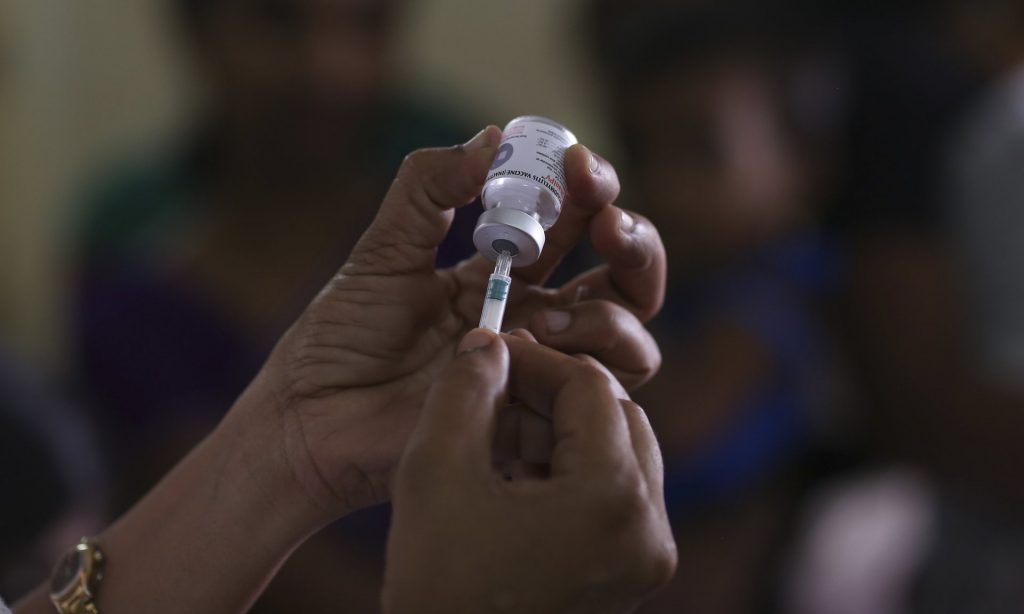
Photograph: Mahesh Kumar A/AP
The global population looks set to rise to 9.7 billion people by 2050, when it is expected that more than two-thirds of humanity will be living in urban areas. The global health community is bracing itself. Compared to a more traditional rural existence, the shift in lifestyle and inevitable increase in exposure to pollution will lead to significant long-term rises in non-communicable diseases such as cancer and cardiovascular disease.
Worrying as this prospect may be, current population trends are already altering the global health landscape even faster than we realise, and that could pose far bigger and more immediate problems.
When population growth is combined with other pressures, such as climate change and human migration, some parts of the world are likely to experience unprecedented levels of urban density. As megacities like Mexico City and Lagos become increasingly common, we could see a rise of the urban epidemic and a new era of infectious disease threatening global health security.
As things stand, large cities in poor countries are already testing our ability to prevent and control infectious disease. But now, as we have seen with Ebola and Zika, there is a danger that urbanisation will start to challenge our knowledge of how previously well-understood diseases are spread. We urgently need to review and update our risk assessments for deadly pathogens of epidemic potential and ensure that we are adequately prepared to deal with urban outbreaks when they do occur.
In theory, cities should be better placed than rural districts to cope with infectious disease. Urban areas in wealthy nations tend to be better resourced in terms of healthcare, finances and facilities. They are also more likely to have a stable electricity supply, access to refrigeration, sanitation and better supply-chain management – all critical for managing vaccines and other vital medicines.
However, all too often low-income countries are poorly resourced and have weak health systems. This is one reason why Ebola, a relatively difficult disease to catch, spread so easily in west Africa but was contained almost immediately when it reached North America and Europe.
Without strong health systems in place, the higher the population density the more difficult it becomes to prevent and control outbreaks, and not just because of the increased risk of contagion. With vaccination, arguably our strongest and most cost-effective defence against infectious disease, urbanisation is already presenting challenges. It used to be the case that the one-in-five children missing out on a full course of even the most basic vaccines lived in remote rural communities. Today, we’re increasingly discovering that many of these hardest-to-reach children are in marginalised urban communities – right in the heart of cities, often hiding in plain sight. Such communities represent a significant blindspot and a major chink in our armour in the prevention of urban epidemics.
In Africa, this is almost inevitable. As population growth across most parts of the world levels off, the number of people in Africa is expected to double by 2050 and quadruple by 2100, rising from 1.2 billion today to 4.4 billion. As this happens, additional pressures will drive more and more people towards the cities. For example, with desert or dry lands already accounting for two-thirds of Africa’s landmass, further desertification is expected to displace 60 million people between 2014 and 2020. Land degradation, rising sea levels, famine or conflict mean more and more people will be competing for less land with one consequence – African cities will swell.
In global health security terms, this is a potential powder keg. The combination of more people living in less space and placing more strain on already limited sanitation represents a fertile breeding ground for infectious disease and the insect vectors spreading them. At the same time, the sheer scale of cities has the potential to overstretch vaccine supplies, limiting our ability to prevent or respond to outbreaks. In Angola, we’re getting a taste of this with the largest major urban outbreak of yellow fever in decades.
Yellow fever outbreaks are not uncommon. But, as with other infectious diseases, when they occur in urban areas they can play out very differently, not least in terms of the speed and scale at which they can spread. In Angola, more than 8 million people have been vaccinated to try to bring an end to the current outbreak. This has meant diverting vaccine doses originally intended for preventative campaigns. Fortunately, there were enough doses available to do this. However, if another major city experiences an outbreak, such as Lagos or even Philadelphia, we may find our remaining supplies dwindling.
It is easy for viruses to move around with the almost 1 billion people who travel out of their country or region of origin each year. The yellow fever outbreak in Angola already seeded cases to Kinshasa, Nairobi and Beijing, further increasing the risk.
So as cities become bigger and denser, the risk and scale of outbreaks will increase, along with the number of vaccine doses needed to check the disease. The best way to avoid outbreaks is to close the gaps through which infection can spread. That means improving routine immunisation coverage and highlighting urban blind spots. At the same time, we need to review regularly our risk assessment for infectious disease to ensure that we have enough doses of vaccine to cope with worst-case scenarios.
We also need to make sure that those scenarios accurately reflect how diseases scale. We can’t assume that it will always be linear. That was certainly the case with Zika, until recently a relatively benign disease known only to a handful of experts. It was only when it reached more populated urban areas, and spread to greater numbers, that the full risks became apparent. For the thousands already infected, that was too late. With infectious disease, without vaccines there’s no safety in numbers.
- Dr Seth Berkley is the CEO of Gavi, the Vaccine Alliance
